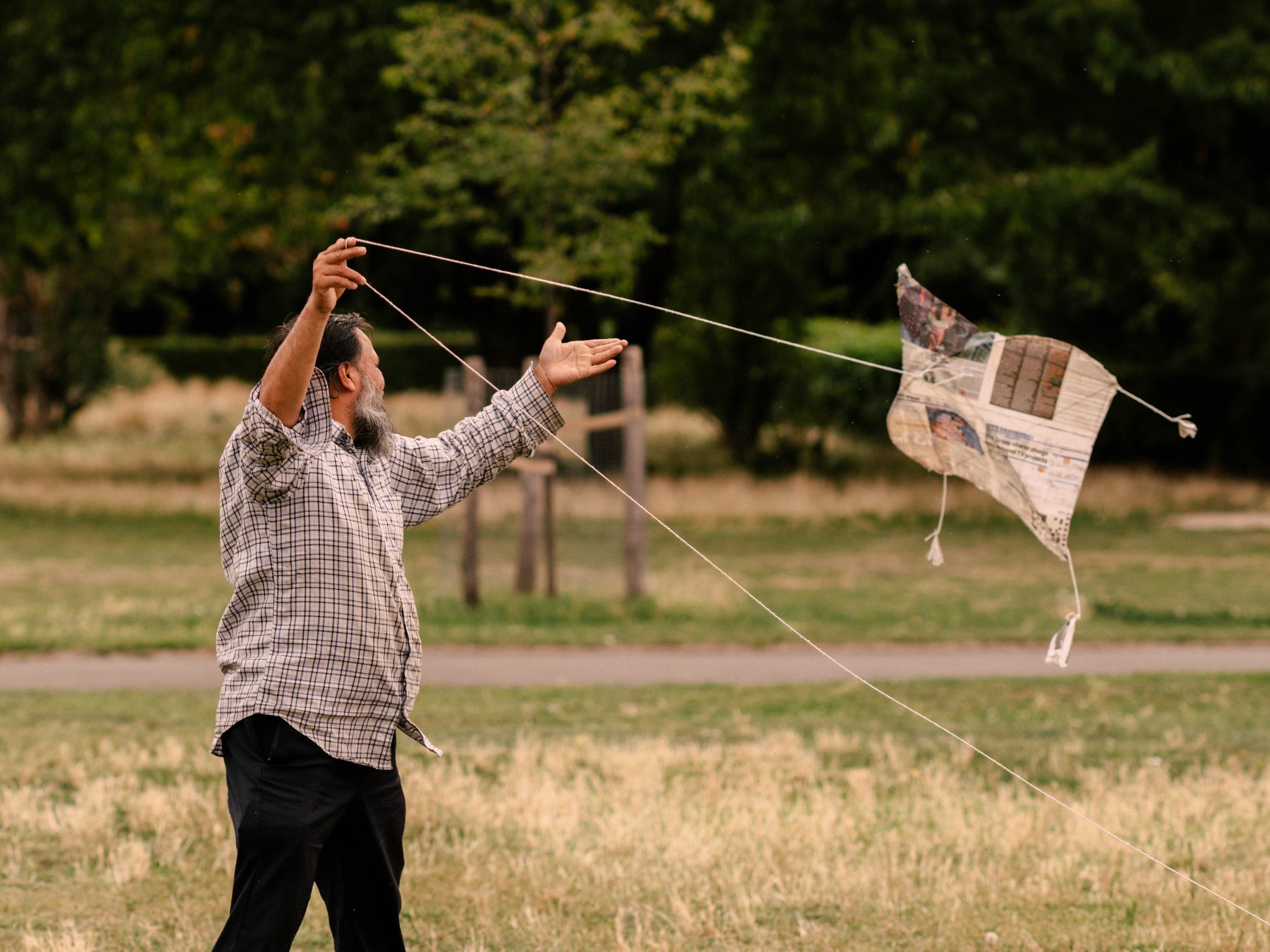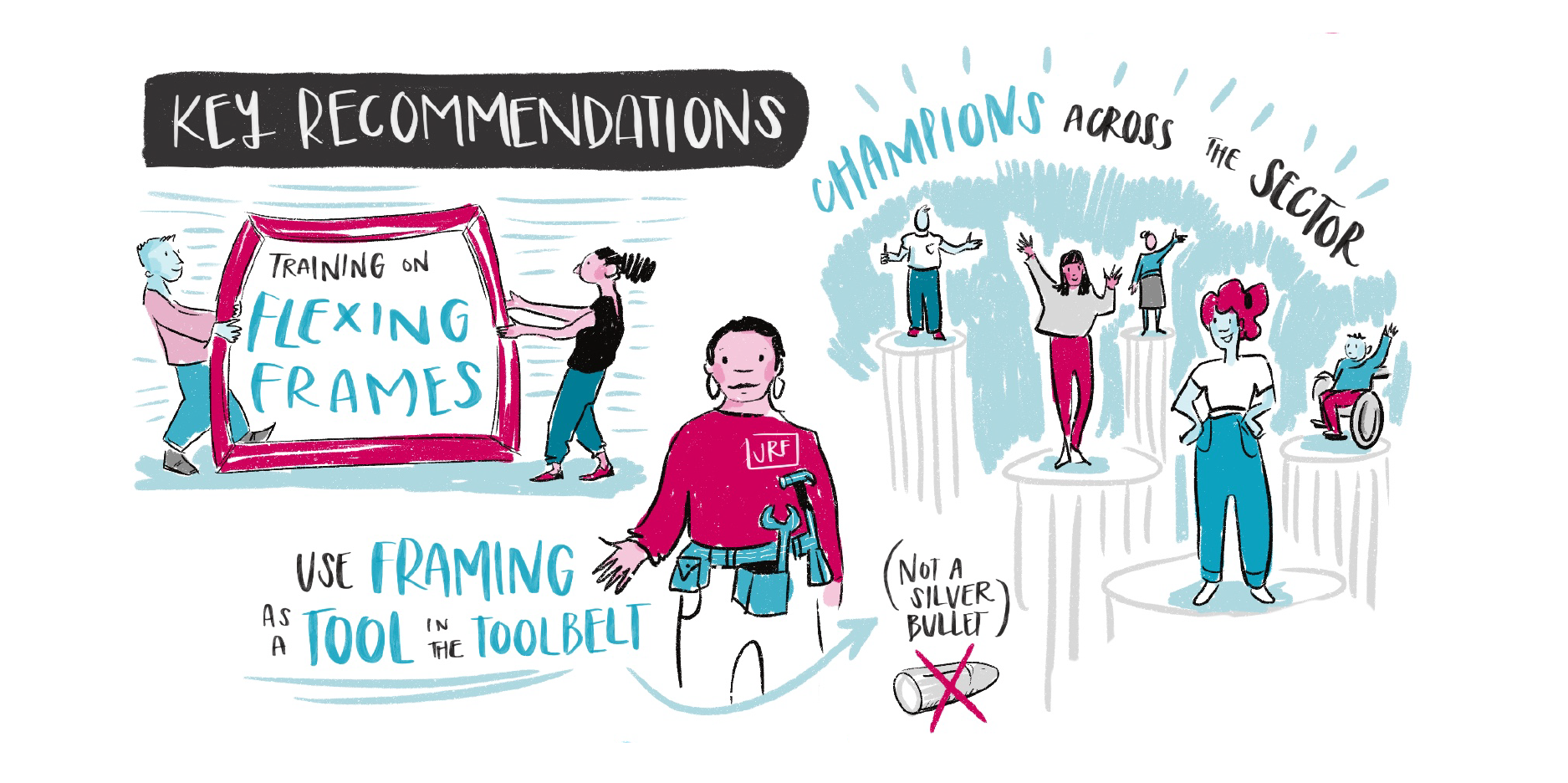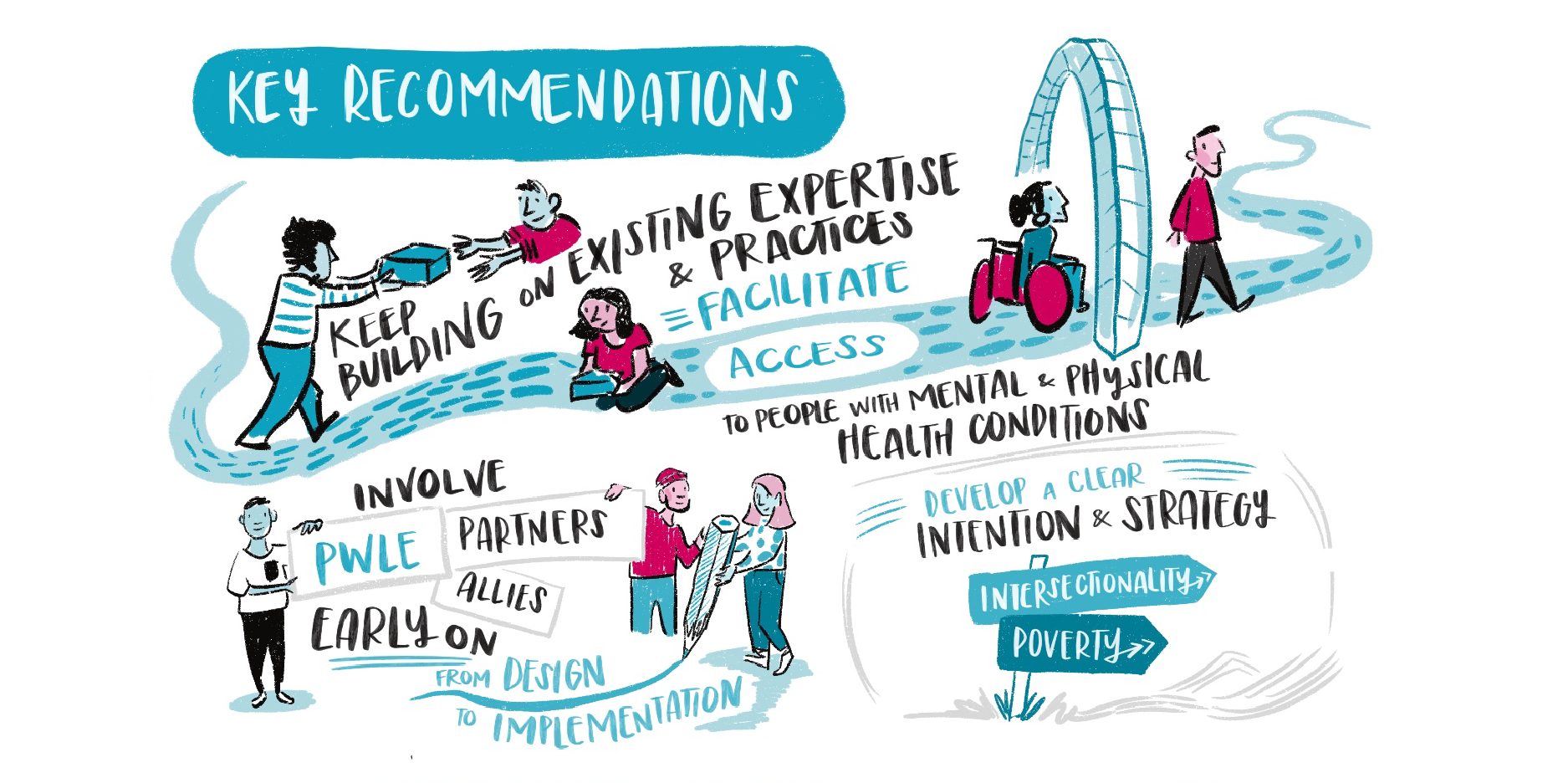Maximising the impact of the ‘talking about poverty’ framing
In 2022, the Rights Evaluation Studio conducted an evaluation of JRF’s Talking about Poverty project. In this blog Sophie Nicholas, Impact Researcher and Facilitator at Rights Evaluation Studio, looks at what worked, what didn’t, and shares some key lessons going forward.
Talking about Poverty
JRF's Talking about Poverty project aimed to develop a more effective way of communicating about UK poverty through framing techniques (a strategic communications tool). For the TaP project, framing is all about making deliberate choices about how you communicate, telling stories that change hearts and minds, and making a moral case for tackling poverty - appealing to people’s values of compassion and justice.
The framing for the Talking a Poverty project was based on insight from research (conducted by the FrameWorks Institute in 2016) with 20,000 people to develop ways to talk about poverty and understand public attitudes to poverty in the UK. Since then, JRF held framing conferences, events, and workshops across the UK, and produced resources to share their findings and support the use of framing.
In 2019, JRF also produced their Framing Toolkit to explain what framing is, why they use it, and how others can put it into action.
Our evaluation and research
In 2022, Rights Evaluation Studio carried out independent research to identify lessons learnt from the Talking about Poverty project.
The evaluation took place from July to November 2022. We conducted interviews, focus groups and surveys to collect feedback from a variety of people including JRF staff, partners, third sector allies, and people with lived experience of poverty. We also conducted a media and political content analysis to track and identify poverty discussions in the media, House of Commons, plus some selected content from Twitter.
Five key lessons from our evaluation
1. Finding the right balance between authenticity and consistency
Where staff at JRF felt confident using the framing, they felt they had more effective conversations about poverty with different stakeholders and that they were better received, with one staff member described it as “giving everyone a powerful way to communicate”. Both JRF staff and the third sector said the tools were easy-to-use and effective, but also too inflexible at times.
People with lived experience told us they felt more confident and gained communications skills because of attending the framing training sessions. One person with lived experience of poverty told us framing poverty is about:
Finding a balance between authenticity, authoritativeness, and appropriateness.
We found people with lived experience valued the framing as a way to bridge their lived individual experiences with wider social narratives and structural issues. In this way, the framing (when used flexibly) balances FrameWorks’ research as an authority and structural guideline to effective framing, with people’s authentic experiences of poverty. The word ‘authenticity’ came up across the whole evaluation, with a clear lesson emerging: To strike the right balance of authenticity and consistency in messaging to achieve the desired impact.
For example, some people with lived experience of poverty wanted more examples of how to make framing sound more natural and felt framing was better suited for certain audiences such as the media or policy makers, rather than others with lived experience of poverty. We recommend future framing projects ensure they equip people with the confidence to not only use the most memorable aspects of the framing, but to adapt it to their audience and ensure authenticity of messaging.
2. Use framing as one tool in the toolbelt, not a silver bullet
The framing became a powerful tool of communication at JRF, however JRF staff mentioned wanting to embrace, adapt to, and mitigate challenges and changes more. So, we recommend framing as a tool in the toolbelt, rather than a magic bullet.
Note: M&E in the above image is an abbreviation of Monitoring and Evaluation
3. Think ahead!
The vast majority of third sector partners and allies engaged in our evaluation both valued and utilised the framing in their work; crediting it with adding more dignity, positivity, and effectiveness to their communications.
There were however struggles citied with buy-in and implementation of the framing in the long-term. Our evaluation points towards some key root causes of these challenges, one of which was a need for more sustainability planning.
We recommend developing a clear theory of change and project strategy (including a close-out or transition plan), as well as conducting an in-depth risk assessment, not just on the practical side of things, but to including things like ethics, design, relationships, and risks to outcomes being achieved.
4. The power is in collaboration and movement building
One high-level change with potential for positive impact on people experiencing poverty was the Keep the Lifeline campaign, which is thought to have an impact on the Government’s reinvestment into Universal Credit. There was strong coordination of the sector to drive this campaign forward which was facilitated by the framing.
TaP in this way was attributed by many engaged in our evaluation as being pivotal for bringing the sector together, creating a buzz and creating a strong movement – a positive impact in and of itself!
We recommend JRF involving people with lived experience of poverty, partners, and allies from the sector from the beginning phases of future projects, including the design and research phases to help strengthen the connection and movement across the sector, and develop a sector-wide pool of champions to keep momentum going.
5. Keep building on ways to include more people and communities
We recommend developing a clear intention, strategy and plan towards intersectionality, marginalised communities, and poverty.
We would also recommend keeping up the momentum in centring the engagement of people with lived experience in JRF’s communications and workshops, and to consider how people can tell their stories on their own terms.
Finally, especially for people with both physical and mental health conditions, we advise JRF to build on existing expertise to facilitate better access and develop more accessible and varied framing tools and resources.
Note: 'PWLE' in the above image is an abbreviation of 'people with lived experience'
Looking forward
There is a lot to celebrate within the Talking a Poverty project. Talking about Poverty made people with lived experience of poverty that engaged in the project feel more hopeful about the future, as well as confident that the project would have a positive, accumulative effect on how poverty is being talked about in public discourse. Plus, there was some evidence pointing towards some degree of influence in the House of Commons and media.
Talking about Poverty provided a robust, evidence-based communications strategy for both JRF staff and allies. The project created a buzz in the sector and was credited with helping to build a stronger more coordinated movement. Most third sector allies valued the framing in their work and felt their communications were more dignified, positive, and effective when using the framing.
Looking towards the future, we suggest JRF support more innovation in this area, use its leadership role to foster more collaboration and a community of practice, and work with their allies and partners from the very beginning of future projects and for more effective and meaningful engagement and impact.
For more information on this, read the full report.
Rights Evaluation Studio (RES) is a small research and evaluation consultancy providing evaluation services to help measure and demonstrate the results and impact of human rights and social change projects and programmes.
This evaluation project was delivered by the RES team: Patrick Regan, Director and Lead Researcher, who was supported by Sophie Nicholas, co-lead Facilitator and Researcher, and Hugh Atkinson, Associate Researcher.
Illustrations: Blanche Illustrates (Artist and Illustrator)

This story is part of the narrative change topic.
Find out more about our work in this area.


